Table of Contents
Most of you have at least heard the word yoga, and others have a rough idea of what it entails. This activity is definitely becoming more and more popular. This is probably due to the fact that it brings both physical and mental benefits. Regular yoga can increase energy levels and vitality, improve flexibility and strength.
It can also contribute to better stress management. It cleanses the mind of various difficult thoughts and helps with mental relaxation. However, all this is only a fraction of what yoga can bring into your life. That’s why we decided to look at it from the ground up today. So, sit back and get to know the activity which is enjoyed by millions of people around the world. [1]
Namaste, this is yoga
Let’s start with the explanation of what yoga actually is. Its name is derived from the Sanskrit root ‘Yuj’, meaning “to join” or “to unite”. The philosophy of yoga, which is about connecting the mind, body and spirit, also derives from this. In practice, it is an exercise that combines physical positions, so-called asanas, breathing techniques, meditation and other relaxation techniques.
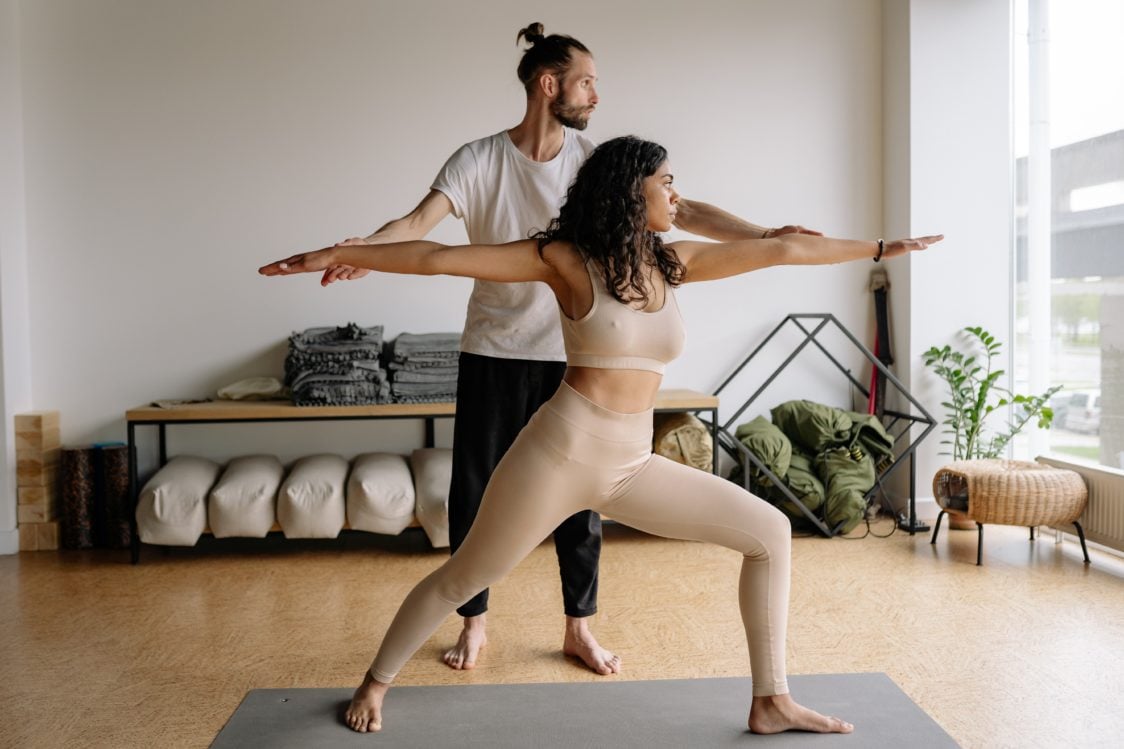
It has its roots in Indian philosophy, where it is first mentioned 5,000 years ago. At that time, it also began to be used as a spiritual practice. Doing yoga regularly can support muscle endurance, strength, flexibility, inner peace and well-being.
The word namaste, as mentioned earlier, is also associated with yoga, and it is a kind of greeting. But it’s not just a simple “hello”. Rather, it is a formal expression of deep respect, mostly addressed to a respected elder or teacher. [2–3]
The most popular types of yoga
Modern yoga can help improve physical condition and mental well-being. It involves strength, dexterity, flexibility and breathing techniques. There are quite a few specific types of yoga. However, below we will describe the most popular ones and you can decide which one is for you based on your goals and fitness level. [16–21]
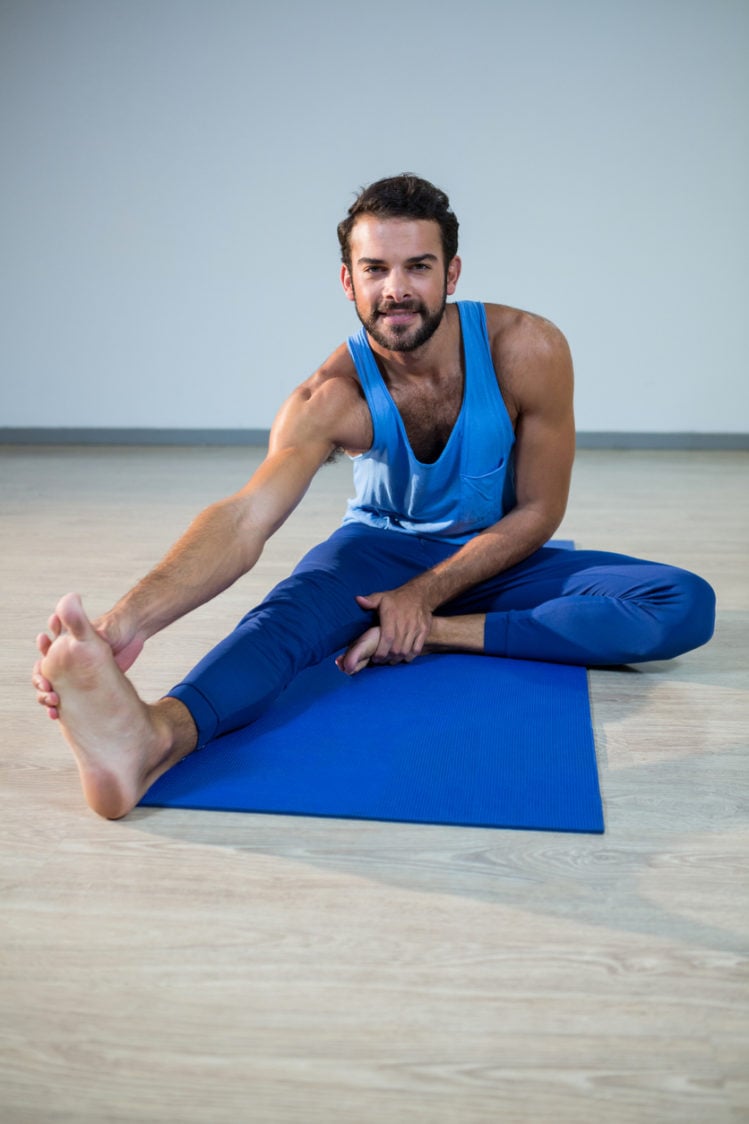
1. Hatha Yoga
It is a general name for an exercise focused on static poses, asanas, which is combined with controlled breathing (pranayama) and meditation to calm the mind. It is great for beginners because it is not difficult. However, it also depends on how easy or difficult you want to make it. It can last 45-90 minutes and is suitable for beginners, who can learn how to control the body.
2. Kripalu Yoga
Suitable for beginners who are trying to figure out the level of their fitness. In addition to meditation and breathing, it puts equal emphasis on the mind, body and spirit. This style can be adapted by everyone, regardless of their age, abilities, condition or other physical predispositions.
It can start, for example, with breathing exercises, continue with gentle stretching, then a few asanas and end with relaxation. If you want to start with yoga, Kripalu is ideal for that. Its goal is to contribute to positive mental transformation and physical health.
3. Bikram Yoga
This is a 90-minute exercise that involves repeating 26 positions at set intervals. It is often carried out in artificially heated rooms at a certain temperature and humidity. That is why it belongs to the “hot yoga” group.
4. Ashtanga Yoga
It is a modern form of traditional Indian yoga. It focuses on intensive discipline, movement and flexibility.
Ashtanga yoga uses six standing and sitting positions, which combine every movement with breathing. It belongs to the athletic styles of yoga, which is more demanding and focuses on the greetings of the sun. Furthermore, it seeks to challenge the philosophy of love and freedom.
5. Power Yoga
It is a quick whole-body exercise aimed at increasing your heart rate and burning calories. In addition, it contributes to building strength and flexibility. It includes many positions from Ashtanga yoga. However, it is more intense and more athletic. It is a perfect way to strengthen the core and upper body.
6. Iyengar Yoga
It was founded in the 70s and is focused mainly on the technique of holding each position correctly, for several inhales and exhales. It uses various props such as chairs, pads, straps, etc. Its purpose is to work in increasingly difficult positions and stay in them for longer and longer.
7. Kundalini Yoga
It combines movement, breathing, meditation and mantra singing, which are united in cycles called kriya. Its goal is to release accumulated kundalini, or shakti energy. It is a spiritual form of energy that should be located in the lower part of your spine. Kundalini yoga tries to allow the energy to move up through all the chakras. Ultimately, it will contribute to a stronger body and increase the level of self-awareness.
You might be interested in these products:
6 Main Benefits of Yoga
People who practice yoga know very well why they do it. There are several benefits associated with it, which have also been confirmed by scientific research. Below we will introduce you mainly those that are worth paying attention to. You will be pleased that they do not include only physical but also mental benefits.
1. Helps manage stress and improves mental health
A 2018 study analysed 52 women. They completed 12 yoga exercises over four weeks – three times a week, and their levels of depression, anxiety and stress decreased significantly. Meditation, breathing or sound practises are also a great help when fighting mental illnesses. Research has shown that people who practice yoga experience significantly less tension, fatigue, anger, stress or depression. [4–5]
If you are further interested in this topic, read our article on Why Is Stress Dangerous and How to Reduce It.
Yoga can also help fight burnout. This was the basis of a study that focused on care workers during the COVID-19 pandemic. It concluded that meditation activities, including yoga, helped significantly reduce the effects of burnout by improving interoceptive awareness. [26]
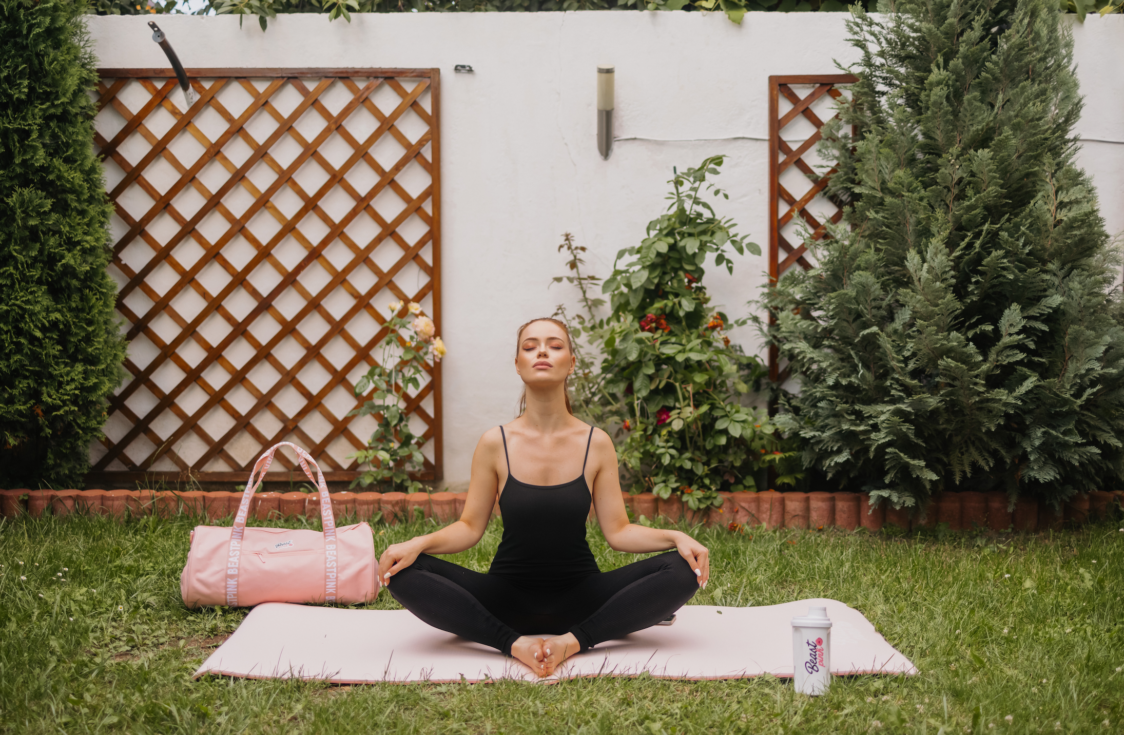
2. Increases flexibility
Studies have found that even the lowest intensity yoga can help increase flexibility. This can be especially useful for the elderly. Loss of flexibility and muscle mass is a natural part of ageing, which can be alleviated thanks to yoga exercises. Positive results may appear after only 10 weeks. [6–8]
3. Can contribute to strength development
Due to its relaxing nature, yoga tends to be quite underestimated in regards to the physical standpoint. However, everyone who has tried it knows that this exercise is not that easy and can be quite exhausting. The impact of yoga on strength development has been the subject of various studies. One found that Hatha yoga can improve not only flexibility but also muscle strength. Positive changes were observed in all participants of different age groups. Here too, however, it is important to mention that this benefit depends mainly on what kind of yoga you practice. [9]

4. Improves balance
It is also challenging to master individual yoga positions, the so-called asanas. They require not only strength, flexibility and balance. Therefore, yoga can be a useful way to improve physical balance not only for ordinary people, but also for athletes. According to studies, the positive effect is also visible in the elderly. Due to their age, falls can have very unpleasant consequences. [10–11]
5. Has a positive effect on sleep
Studies show that practicing yoga can also be beneficial in terms of a positive effect on sleep. This is due to its body-calming effect, clearing the head and relaxation. This is partly related to the physical activity itself, which yoga combines with peace of mind and stress relief. Research on Nidra yoga has yielded the most interesting results in this regard. It has been shown that yoga can help with the treatment of patients suffering from chronic insomnia. [12–14]
If you struggle with sleep, read our article How to Fall Asleep Quickly? Try Simple Tips for Better Sleep.
6. Promotes weight loss and weight maintenance
Yoga teaches patience and the ability to slow down or take care of yourself. People often transfer these traits to other areas of life. The relationship with food is no exception. Those who practice yoga often adhere to the principle of mindful eating.
It can be a good way how to lose or maintain weight. Thanks to mindful eating, you can better recognize when you are really hungry or when you’ve eaten enough.
Typically, it would mean smaller portions and slower pace. As a result, you will consume less energy and burn more calories through yoga, which can help you lose or control your weight effectively. This has been confirmed by studies that show that people who practice yoga have a lower Body Mass Index (BMI) and that many obese people have managed to lose weight through yoga. [15]
If you are further interested in this topic, read our article How and When to Eat to Lose Weight Without a Diet. Our Online BMI Calculator can also help you calculate your body mass index.
Who is yoga for? Even men can appreciate it
Virtually anyone who wants to start this activity can enjoy the above-mentioned benefits of yoga. However, there are more than 50 types of yoga out there, so it is necessary to choose the one that will suit you.
Yoga and Pregnant Women
Even pregnant women can practice yoga, which can help them to get mentally prepared for childbirth. But before that, don’t forget to consult your doctor, who will help you choose the right type of exercise for you. [22]
Yoga and the Elderly
Yoga can also be a very beneficial activity for the elderly. No matter how old you are, this exercise is great for your mind, body and spirit. However, you need to pay close attention to your spine, which is probably not as flexible as it used to be. However, regular yoga at old age can strengthen the spine and help increase flexibility. [22]
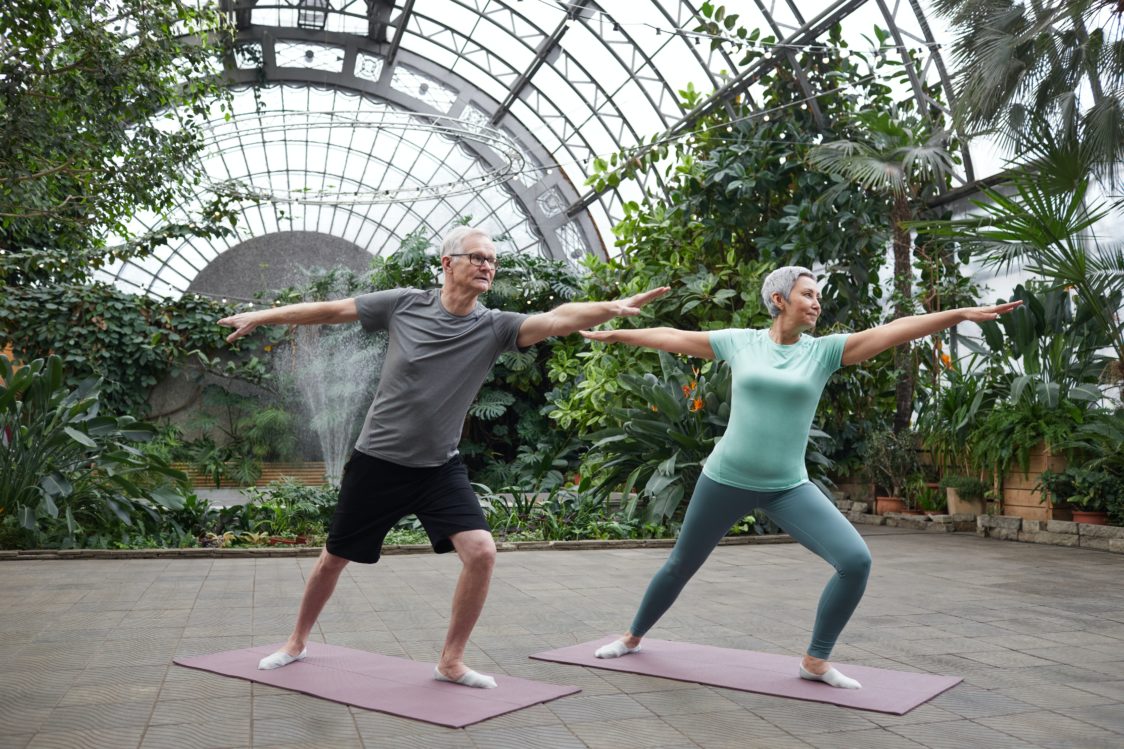
Yoga and Children
In children, yoga can improve both, physical condition and mental health. A growing number of studies have also shown that this activity can help them improve their concentration and memory or reduce their levels of stress and depression. [23]
Yoga and Men
In general, it may seem that yoga is an activity mainly for ladies. However, it is just a misconception and one of the common stereotypes of our society. Yoga can be very beneficial for men too. For example, it can improve their sexual performance.
Yoga helps reduce the stress that is often associated with decreased libido. It also increases flexibility, which can ultimately affect the “bedtime routine” as well. For example, a study of 65 men aged 24-60 addressed this issue. After 12 weeks of yoga, they reported a positive effect on their quality of sex life, including a better erection. [24]
Yoga and Couples
A special chapter is the so-called couples yoga, which provides a great way to benefit from meditation and physical exercise whilst being with your partner. You can get to know your partner better, develop mutual trust or learn new exercises. Yoga can very quickly become your common hobby.
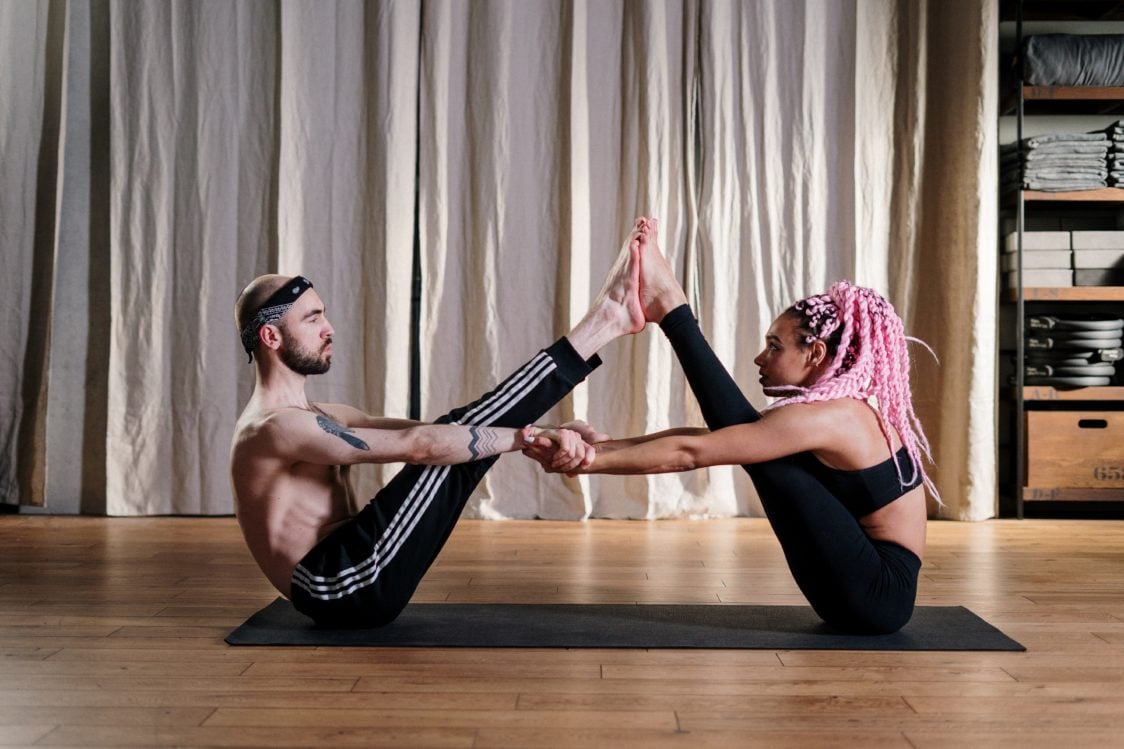
How to Start with Yoga?
Today, you can find yoga classes very easily either online or at local gyms. If you want to start, it is important to choose the type that you will like and that will meet your expectations. Most yoga lessons take 45 to 90 minutes, depending on the level of difficulty.
Normally, the lessons begin with a deep breathing exercise, followed by a short meditation, or a smooth transition to physically less complicated positions focused on deep inhales and exhales. If you are worried about your first yoga class, you come in earlier and first talk to your teacher. [25]
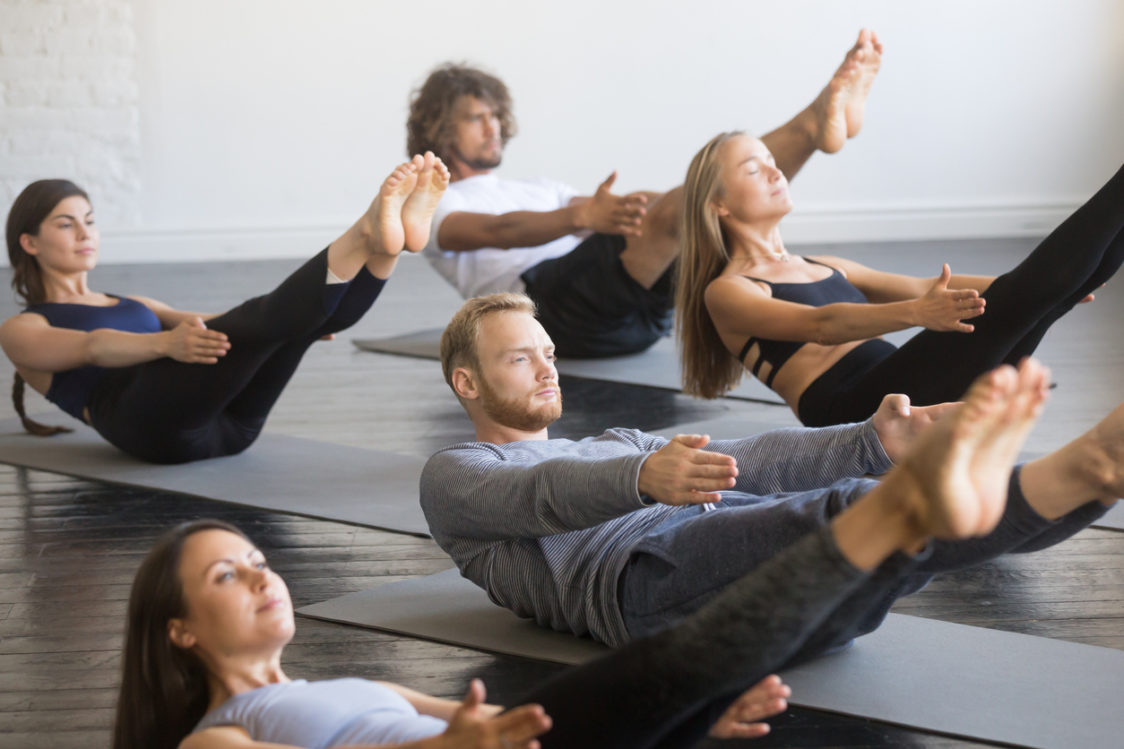
A great thing about yoga is that you can practice it anytime, anywhere. At the beginning, you can only exercise at home. You can find tutorials on various YouTube channels that offer free videos. We can recommend Yoga With Adriene or Boho Beautiful Yoga.
Another advantage is that you do not need any special accessories for the exercise itself. All you need is a comfortable yoga mat, which thanks to its anti-slip finish will ensure your firm stance. That should be enough for you as a beginner. More advanced yogis also usually wear high-quality sportswear, which gives freedom of movement and wicks sweat well. You can also try using foam rollers to relax your body.
You can get inspired by this relaxing yoga for beginners
Conclusion
As you can see, practising yoga has many interesting benefits. Its main advantage is that it supports both physical and mental health. Another advantage is that you can choose from a wide range of types of yoga and find the one that suits you. You also don’t need any special equipment and you can start from the comfort of your home. There is nothing stopping you from starting tomorrow with a short yoga session that will put you on the right track.
[1] The Benefits of Yoga – https://osteopathic.org/what-is-osteopathic-medicine/benefits-of-yoga/
[2] Hannah Nichols - How does yoga work? – https://www.medicalnewstoday.com/articles/286745
[3] Yoga: What You Need To Know – https://www.nccih.nih.gov/health/yoga-what-you-need-to-know
[4] Masoumeh Shohani, Gholamreza Badfar, Marzieh Parizad Nasirkandy - The Effect of Yoga on Stress, Anxiety, and Depression in Women – https://www.ncbi.nlm.nih.gov/pmc/articles/PMC5843960/
[5] Tamara L. Goldsby, Michael E. Goldsby, Mary McWalters, Paul J. Mills - Effects of Singing Bowl Sound Meditation on Mood, Tension, and Well-being: An Observational Study – https://www.ncbi.nlm.nih.gov/pmc/articles/PMC5871151/
[6] Daniel James Amin, Maureen Goodman - The effects of selected asanas in Iyengar yoga on flexibility: pilot study – https://pubmed.ncbi.nlm.nih.gov/25042310/
[7] M Jay Polsgrove, Brandon M Eggleston, Roch J Lockyer - Impact of 10-weeks of yoga practice on flexibility and balance of college athletes – https://www.ncbi.nlm.nih.gov/pmc/articles/PMC4728955/
[8] Divya Sivaramakrishnan, Claire Fitzsimons, Paul Kelly, Kim Ludwig, Nanette Mutrie, David H. Saunders, Graham Baker - The effects of yoga compared to active and inactive controls on physical function and health related quality of life in older adults- systematic review and meta-analysis of randomised controlled trials – https://www.ncbi.nlm.nih.gov/pmc/articles/PMC6451238/
[9] Kaushik Halder, Abhirup Chatterjee, Rameshwar Pal, Omveer S Tomer, Mantu Saha - Age related differences of selected Hatha yoga practices on anthropometric characteristics, muscular strength and flexibility of healthy individuals – https://www.ncbi.nlm.nih.gov/pmc/articles/PMC4278134/
[10] M Jay Polsgrove, Brandon M Eggleston, Roch J Lockyer - Impact of 10-weeks of yoga practice on flexibility and balance of college athletes – https://www.ncbi.nlm.nih.gov/labs/pmc/articles/PMC4728955/
[11] Dheli Kadachha, Neela Soni, Ankur Parekh - EFFECTS OF YOGASANA ON BALANCE IN GERIATRIC POPULATION – https://www.ijmhr.org/ijpr.4.2/IJPR.2016.107.pdf
[12] Karuna Datta, Manjari Tripathi, Hruda Nanda Mallick - Yoga Nidra: An innovative approach for management of chronic insomnia- A case report – https://sleep.biomedcentral.com/articles/10.1186/s41606-017-0009-4
[13] Esther N. Moszeik, Timo von Oertzen, Karl-Heinz Renner - Effectiveness of a short Yoga Nidra meditation on stress, sleep, and well-being in a large and diverse sample – https://link.springer.com/article/10.1007/s12144-020-01042-2
[14] Wei-Li Wang, Kuang-Huei Chen, Ying-Chieh Pan, Szu-Nian Yang, Yuan-Yu Chan - The effect of yoga on sleep quality and insomnia in women with sleep problems: a systematic review and meta-analysis – https://bmcpsychiatry.biomedcentral.com/articles/10.1186/s12888-020-02566-4
[15] Yoga benefits beyond the mat – https://www.health.harvard.edu/staying-healthy/yoga-benefits-beyond-the-mat
[16] Tia Ghoose - What is Bikram Yoga? – https://www.livescience.com/42322-bikram-yoga.html
[17] What Is Ashtanga Yoga? 3 Tips for Practicing Ashtanga Yoga – https://www.masterclass.com/articles/ashtanga-yoga-explained
[18] Kirsty Tomlinson - What is Iyengar yoga? – https://www.ekhartyoga.com/articles/practice/what-is-iyengar-yoga
[19] What Is Kripalu Yoga? – https://www.doyou.com/kripalu-yoga/
[20] Ann Pizer - What Is Kundalini Yoga? – https://www.verywellfit.com/an-introduction-to-kundalini-yoga-3566821
[21] What Is Power Yoga? Power Yoga Benefits and Common Poses – https://www.masterclass.com/articles/what-is-power-yoga#what-is-power-yoga
[22] Who Can Become a Yogi? – https://www.superprof.co.uk/blog/yoga-for-everyone/
[23] Lindy L Weaver, Amy R Darragh - – https://pubmed.ncbi.nlm.nih.gov/26565100/
[24] Vikas Dhikav, Girish Karmarkar, Myank Verma, Ruchi Gupta - Yoga in Male Sexual Functioning: A Noncompararive Pilot Study – https://onlinelibrary.wiley.com/doi/full/10.1111/j.1743-6109.2010.01930.x
[25] Why You Should Try Yoga – https://www.urmc.rochester.edu/encyclopedia/content.aspx?contenttypeid=1&contentid=2767
[26] Carrie Heeter, Marcel Allbritton, Rebecca Lehto, Patrick Miller, Patricia McDaniel, Michael Paletta - Feasibility, Acceptability, and Outcomes of a Yoga-Based Meditation Intervention for Hospice Professionals to Combat Burnout – https://www.ncbi.nlm.nih.gov/labs/pmc/articles/PMC7967352/


Add a comment